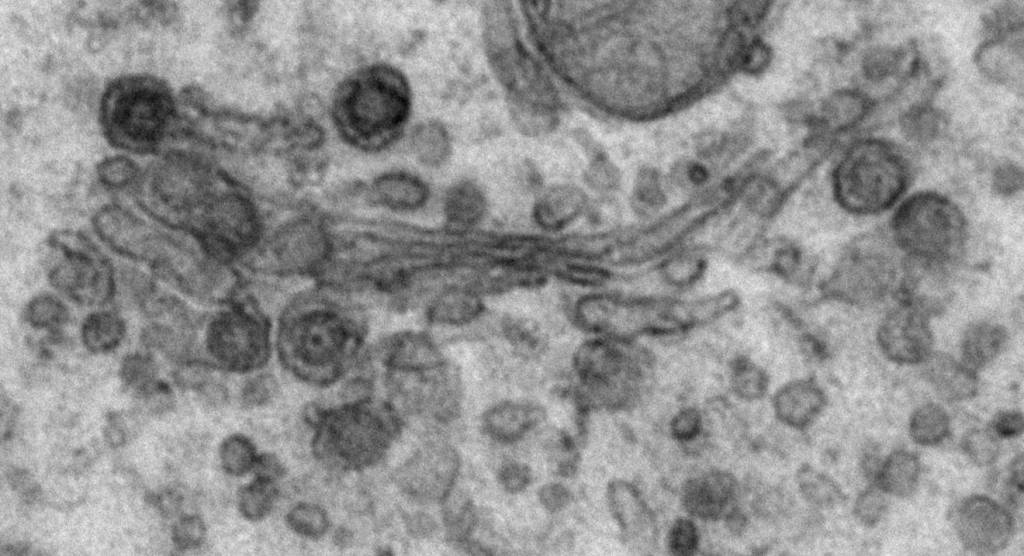
Coronaviruses are enveloped viruses that assemble by budding into the Golgi lumen and then follow the secretory pathway, which is inefficient for such large cargo. These viruses first induce dilation of Golgi cisternae and then modulate the luminal microenvironment to protect virions during their slow trafficking. We are studying the mechanisms by which these perturbations occur to help understand how cells handle other large cargo (e.g. chylomicrons).
Coronaviruses cause mild as well as lethal respiratory diseases in humans (e.g. SARS and MERS). They are 120 nm, enveloped viruses that assemble by budding into the Golgi lumen and then follow the secretory pathway for egress. This is an inefficient process, probably because of the large size of the cargo. These viruses first induce dilation of Golgi cisternae and then modulate the luminal microenvironment to protect virions during their slow trafficking. The image is an electron micrograph of infected cells showing a Golgi region with budded virions; note the dilation of the cisternae accommodating virus particles on the left as compared to the flatter Golgi cisternae on the right. We are studying the mechanisms by which these Golgi perturbations occur to help understand how cells handle other large cargo (e.g. chylomicrons).
Carolyn Machamer, Ph.D.

